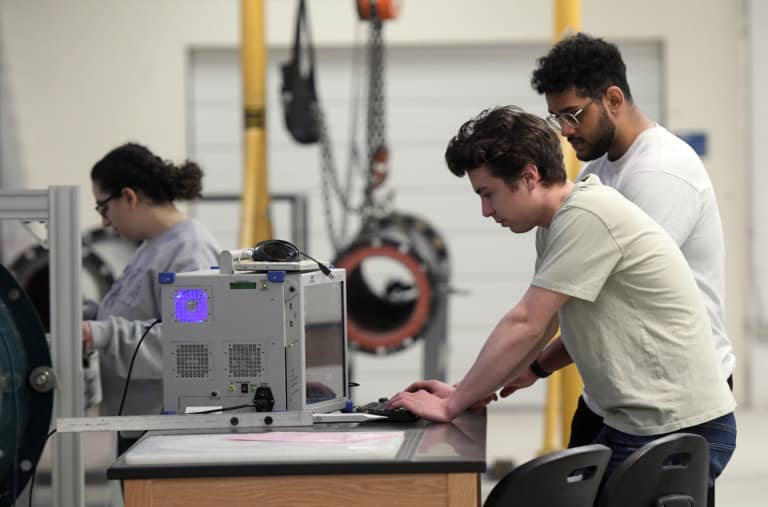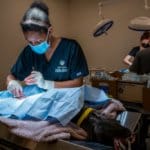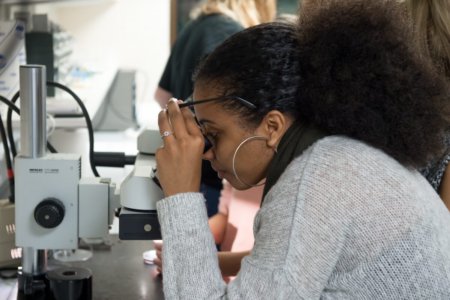
In a groundbreaking intersection of engineering and medicine, there are a few prestigious universities spearheading a transformative wave of innovation to improve healthcare outcomes and save lives. By nurturing a new breed of students who seek to apply engineering principles to the world of medicine, these institutions are cultivating a cadre of visionary researchers and inventors determined to create life-changing technologies.
The global medical industry is massive, and there is a growing need for the most up-to-date technology. The global medical devices market grew from an estimated US$442 billion in 2020 to US$603.6 billion in 2023. While the pandemic does affect this number, it is expected to grow to around $671.49 billion by 2027. From groundbreaking medical devices that enhance diagnostic accuracy and precision to cutting-edge treatments that combat previously untreatable ailments, the projects emerging from these biomedical engineering powerhouses are rewriting the boundaries of what is possible in healthcare.
As students gain hands-on experience, they are emboldened to confront real-world challenges, aiming to transform their theoretical knowledge into tangible solutions that will revolutionise patient care. This inspiring convergence of engineering and medicine holds the potential to reshape the future of healthcare.
Here are three universities that are developing job-ready graduates for this ever-growing healthcare industry:
Wayne State University
Wayne State University’s Biomedical Engineering department is where students and staff improve the quality of human life. The department has been a research leader in this field for over 80 years. Today, it boasts strong links with the automotive industry, expanding into sports, ballistics and blast research areas, all with a focus on saving lives.

Wayne State University’s Biomedical Engineering department’s wealth of experience in injury biomechanics lead to groundbreaking discoveries. Source: Wayne State Universit
The department’s wealth of experience — especially in the modern advances in injury biomechanics and tissue engineering — has led to groundbreaking discoveries. “Getting involved in BME and seeing people researching tissue regeneration and trying to find ways to use a person’s own body to heal themselves — and now having the privilege of doing this type of work myself — has been amazing,” says Madeline Badrak, a biomedical engineering student who is in the process of preparing her findings for journal publication.
Backed by decades of research, the course content developed here is next to none, and even the educators’ copious experience and knowledge are top-notch. The staff include an emeritus professor who is a National Academy of Engineering member and several faculty who are fellows of the American Institute for Medical and Biological Engineering. The chair of the department also has two Emmys for her work as a science producer. You benefit from this first-class teaching even with the online format, with tuition that is on par with in-state tuition for all online students. With a rolling admission, you can apply today and start as early as the Fall semester.
The Master of Science in biomedical engineering: injury biomechanics (online) equips students with key skills such as applying maths, science and engineering concepts to identify, formulate and solve problems in biology and medicine. They learn to design and conduct scientific experiments and analyse and interpret the resulting data, and partner with physicians and clients to apply mechanisms of injury knowledge in order to develop solutions. This program offers all of the educational foundation you will need to succeed in the field of injury biomechanics which includes forensic biomechanist, product safety engineer, injury prevention specialist and accident reconstructionist.
If you prefer an in-person programme, the Master of Science in biomedical engineering includes five specialisation pathways: biomechanics of injury, biomedical instrumentation, biomedical imaging, biomaterials and tissue engineering, and computational and systems biology. Available to both part-time and full-time students, this programme has research or non-research degree options.
UC Irvine
The Henry Samueli School of Engineering at UC Irvine is ranked 21st in US News & World Report’s current listing of best public engineering graduate schools. Its Department of Biomedical Engineering has a mission statement which succinctly encompasses its teaching and identity: inspire engineering minds to advance human health. “This mission is well integrated within and supported by our local community as Orange County is home to 150 biomedical device companies,” says Zoran Nenadic, William J. Link professor and Biomedical Engineering chair. “Our department has strong ties to the UC Irvine’s School of Medicine, with many of our faculty members holding joint appointments there or collaborating with clinicians to translate their technologies from the laboratory to the bedside.”

UC Irvine’s department of Biomedical Engineering has been rapidly growing. Source: UC Irvine
Founded in 2002, the Department of Biomedical Engineering has been rapidly growing, funded by a generous US$3 million development award from the Whitaker Foundation. Its 556 undergraduate and 138 graduate students are led by 33 full-time and 63 affiliated faculty. The department has 11 world-class centres and seven research thrusts, which are in Biomedical Computational Technologies, Biomedical Nanoscale Systems, Biomolecular/Genetic Engineering, Biophotonics, Cardiovascular, Neuroengineering and Tissue Engineering. The major milestones are two undergraduate degree programmes and the expansion of the graduate programme leading to the MS and PhD degrees in biomedical engineering.
University of Miami
University of Miami’s College of Engineering is a great school for ensuring your employability, as 89% of graduates secured post-grad plans within six months. The Department of Biomedical Engineering, in particular, was the first of its kind in Florida, with the first class of BSBE students graduating in 1993. Its mission statement is to prepare future leaders in biomedical engineering who are motivated to create a positive impact on human health, medicine, and industry.

Biomedical engineering
The department has been accredited by the Engineering Accreditation Commission (EAC) of the Accreditation Board for Engineering and Technology (ABET) since 1997. Its expertise covers a broad range of engineering topics and medical disciplines. The department is split into three clusters — Imaging, which focuses on the development of image-guided surgical procedures; neural engineering, where the faculty look into the development of methods and devices to assess vision; and regenerative engineering, where research is focused on harnessing the power of cells and tissues to characterise native tissue and cell biomechanics to predict disease states.
The Department of Biomedical Engineering offers MS and BS/MS programmes focusing on challenging issues, such as robotic movement systems, bioengineered materials, the brain-computer interface, and treatments for neural degenerative conditions like Alzheimer’s disease.
“With these exciting programs and the support of industry partners, our Neural Engineering Initiative is well-positioned for leadership in this field,” said Pratim Biswas, dean of the College of Engineering. “We are looking forward to recruiting and training the next generation of professionals seeking to improve the functioning and well-being of people with traumatic injuries or chronic disorders of the brain and central nervous system.”
*Some of the institutions featured in this article are commercial partners of Study International










